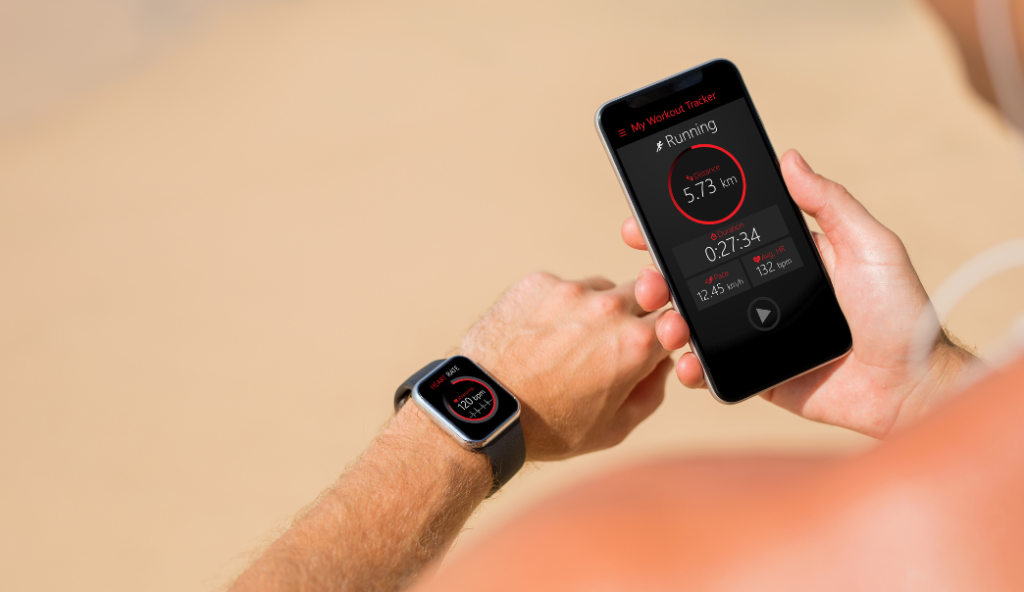In recent years, chiropractic care has experienced a significant evolution. As our understanding of the human body deepens and technology advances, new treatments are revolutionizing the field. These innovations promise to improve patient outcomes, enhance the effectiveness of chiropractic adjustments, and even transform how care is delivered. In this article, we will explore some of the most exciting innovations in chiropractic care and how they are shaping the future of the field.
Exploring Robotic Assistance in Chiropractic Adjustments
Robotic assistance is revolutionizing healthcare, and chiropractic care is no exception. By harnessing the power of robotic technology, chiropractors can achieve unparalleled precision and control in their adjustments. With the assistance of robotic devices, chiropractors can easily navigate the intricate anatomy of the spine, ensuring optimal alignment and reducing the risk of injury.
But the benefits don’t stop there. These robotic systems can also record and analyze data during adjustments, providing valuable insights for future treatments.
Imagine a scenario where a chiropractor is performing an adjustment with the help of a robotic device. As the chiropractor carefully manipulates the robotic arm, sensors in the device provide real-time feedback on the patient’s spine.
Advanced algorithms then analyze this data, which detect subtle misalignments that may not be apparent to the naked eye. Armed with this information, the chiropractor can make precise adjustments, targeting specific areas of concern and ensuring that the patient receives the most effective treatment possible.
Improved Patient Comfort
One of the key advantages of robotic assistance in chiropractic adjustments is the enhanced patient comfort it provides. Traditional adjustments often involve manual force, which can be uncomfortable for some individuals. However, robotic assistance can precisely control the force, allowing for gentle and controlled adjustments.
This not only reduces discomfort but also improves the overall patient experience. Patients can now undergo chiropractic adjustments without the fear of excessive force or unexpected movements, resulting in a more relaxed and enjoyable treatment session.
Moreover, the use of robotics eliminates the physical strain on chiropractors. Performing manual adjustments can be physically demanding, especially when dealing with patients who require multiple adjustments or have complex spinal issues. Robotic assistance allows chiropractors to perform adjustments with greater precision and efficiency without putting unnecessary strain on their bodies. This benefits the chiropractors and ensures they can provide consistent and high-quality patient care.
Enhanced Accessibility
Another significant benefit of robotic assistance is the potential for enhanced accessibility to chiropractic care. Remote-controlled robotic devices could allow chiropractors to care for patients in remote or underserved areas. Imagine a patient living in a rural community far from the nearest chiropractic clinic.
With the help of a robotic device, the chiropractor can remotely control the device and perform adjustments on the patient, providing them with the care they need without the need for lengthy and costly travel.
This technology also overcomes the barriers of distance and transportation, ensuring that more individuals can receive the benefits of chiropractic adjustments. Additionally, robotic assistance can shorten appointment times, making it easier for patients to fit chiropractic care into their busy schedules.
With the ability to perform adjustments more efficiently and accurately, chiropractors can see more patients in a shorter time, reducing wait times and increasing accessibility for everyone.

The Rise of Telehealth in Chiropractic Practices
Telehealth has become increasingly popular across various healthcare fields, and chiropractic care embraces this trend. With telehealth, patients can consult with chiropractors remotely, sometimes eliminating the need for in-person visits. Through secure video conferencing or online messaging platforms, chiropractors can assess patient conditions, provide guidance on exercises and stretches, and answer any questions or concerns. This convenient and cost-effective approach to care is revolutionizing the accessibility of chiropractic services.
Convenience and Flexibility
Telehealth offers unprecedented convenience and flexibility for both patients and chiropractors. Patients no longer need to commute to a physical clinic, saving time and reducing transportation costs. This is especially beneficial for individuals with mobility issues or those residing in areas with limited access to chiropractic care. Furthermore, telehealth allows for greater scheduling flexibility, as appointments can be conducted from the comfort of one’s home or office. This flexibility empowers patients to prioritize their well-being without sacrificing other commitments.
Continuity of Care
Telehealth also promotes continuity of care, ensuring patients receive ongoing support and guidance throughout their chiropractic journey. Regular virtual check-ins allow chiropractors to monitor progress, make necessary adjustments to treatment plans, and provide personalized recommendations.
This level of support enhances patient outcomes and fosters a solid patient-chiropractor relationship built on trust and collaboration.
Moreover, telehealth enables chiropractors to extend their reach beyond geographical boundaries. Patients who live in remote areas or have limited access to chiropractic services can now benefit from expert care without the need to travel long distances. This has a significant impact on improving healthcare equity and bridging the gap between urban and rural communities.
Additionally, telehealth technology allows chiropractors to leverage advanced tools and resources during virtual consultations. With the ability to share screens and access digital health records, chiropractors can provide more accurate diagnoses and tailored treatment plans.
This technology integration enhances the quality of care and streamlines administrative processes, reducing paperwork and improving overall efficiency.
The rise of telehealth in chiropractic practices transforms how patients receive care and interact with their chiropractors. The convenience, flexibility, continuity of care, and expanded reach offered by telehealth are revolutionizing the accessibility and effectiveness of chiropractic services. As technology advances, telehealth is poised to play an even more significant role in the future of chiropractic care, ensuring that patients can prioritize their well-being and receive the expert guidance they need, regardless of their location.
Virtual Reality for Patient Education and Rehabilitation
Virtual reality (VR) technology has emerged as a powerful tool in various healthcare domains, including chiropractic care. By immersing patients in realistic virtual environments, chiropractors can enhance patient education and rehabilitation. VR can simulate correct posture, demonstrate proper movement patterns, and teach relaxation techniques. This immersive experience empowers patients to take an active role in their care and accelerates the healing process.
Engaging and Interactive Learning
Traditional patient education materials can often be dry and disengaging, leading to limited retention of information. Virtual reality changes the game by providing an engaging and interactive experience.
Patients can visualize the impact of their posture on the spine, witness the benefits of correct movement patterns, and practice relaxation techniques in a realistic environment. This dynamic learning approach enhances patient understanding, improving compliance and long-term success.
Accelerated Rehabilitation
VR technology can also expedite the rehabilitation process for chiropractic patients. By replicating real-life movements and activities, VR exercises can help patients regain strength, improve balance, and enhance proprioception.
This targeted and customized approach to rehabilitation allows for more efficient recovery, reducing the time required for patients to return to their normal daily activities. Additionally, the interactive nature of VR exercises promotes motivation and engagement, further optimizing the rehabilitation process.
The Impact of AI on Diagnosing and Treating Spinal Conditions
Artificial intelligence (AI) is revolutionizing healthcare, and its impact on chiropractic care is no exception. AI algorithms can analyze vast amounts of data to assist chiropractors in diagnosing and treating spinal conditions. By leveraging machine learning techniques, AI can identify patterns and anomalies in imaging scans, predict patient responses to treatments, and suggest personalized treatment plans.
Integrating AI into chiropractic care holds enormous potential for improving patient outcomes and optimizing treatment effectiveness.
Advanced Imaging Analysis
AI algorithms can analyze complex imaging scans, such as X-rays or MRI images, with unparalleled accuracy and efficiency. By quickly identifying subtle abnormalities or signs of pathology, AI can assist chiropractors in making more accurate diagnoses and developing targeted treatment plans. This advanced imaging analysis saves valuable time and reduces the risk of human error, ensuring that patients receive the most appropriate care.
Personalized Treatment Recommendations
AI can also contribute to personalized treatment recommendations in chiropractic care. AI algorithms can identify patterns and correlations that human practitioners may overlook by integrating patient data, such as medical history, lifestyle factors, and treatment outcomes.
With this information, AI can suggest tailored treatment plans considering each patient’s needs and characteristics. As a result, patients can receive more individualized care, leading to improved outcomes and overall satisfaction.
Wearable Technology: A New Frontier for Posture Correction and Spinal Health
Wearable technology is transforming the future of Chiropractic care. More specifically in how we monitor and manage our health, and its potential impact on posture correction and spinal health is immense. These devices can track body posture, movement patterns, and sedentary behavior, providing real-time feedback and actionable insights. Posture-correcting devices improve spinal health.
Real-Time Posture Feedback
Wearable devices designed for posture correction can provide real-time feedback on body positioning. By continuously monitoring posture, these devices can detect slouching or poor alignment and alert the wearer through vibrations or gentle reminders. Improve posture and reduce strain with feedback.

Promoting Active Movement
Some wearable devices go beyond posture correction and encourage active movement to maintain optimal spinal health. These devices remind individuals to take regular breaks from prolonged sitting, encourage stretching and exercise, and track activity levels throughout the day. By promoting active movement and reducing sedentary behavior, these wearables contribute to overall spinal health and well-being.
Integrative Treatment Approaches: The Convergence of Chiropractic Care and Other Therapies
The future of chiropractic care lies in the integration of different treatment modalities. Recognizing that patients often benefit from a holistic approach, chiropractors are embracing the convergence of chiropractic care with other therapies. Chiropractors can provide comprehensive and personalized care that addresses the underlying causes of musculoskeletal conditions by combining techniques such as acupuncture, massage, or physical therapy.
Collaboration for Holistic Treatment
Integrative treatment approaches promote collaboration among healthcare practitioners to deliver the best possible care for patients. Chiropractors can work closely with other therapists, exchanging knowledge and expertise to create a multidisciplinary treatment plan. Integrative treatments address physical, emotional, and lifestyle factors for holistic wellness and optimal health.
Personalized Care Pathways
Integrating different therapies allows personalized care pathways tailored to each patient’s needs and preferences. By considering the benefits and limitations of each treatment modality, chiropractors can craft a comprehensive plan that optimizes treatment outcomes and patient satisfaction. This patient-centered approach fosters a partnership between the patient and practitioner, improving engagement and motivation throughout the treatment process.
The Future of Chiropractic Care: Embracing Innovation
The future of chiropractic care is fueled by innovation. By harnessing the power of robotics, telehealth, virtual reality, AI, and wearable technology, chiropractors can provide enhanced care, improve patient outcomes, and transform the patient experience. Moreover, integrating different treatment approaches ensures that patients receive comprehensive care that addresses the underlying causes of their musculoskeletal conditions.
As technology advances, we can expect the future of Chiropractic care to become more patient-centric, accessible, and practical, ushering in a new era of spinal health and well-being.


